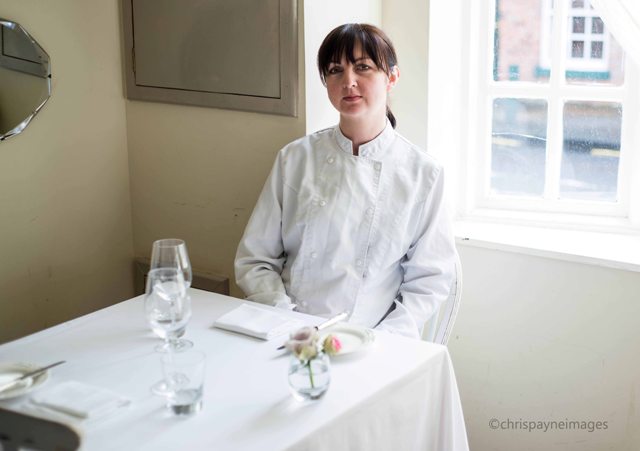Bridlington, once a forgotten East Yorkshire coastal town, has had a new lease of life thanks to David Hockney, one of the UK’s greatest modern artists, who now lives there. The town, in collaboration with tourism agency Welcome to Yorkshire, has created an official tourist trail to reference a number of sites, with particular focus on the Yorkshire Wolds that inspired him.
There was a resurgence of interest following the Hockney exhibition at the Royal Academy in London in January 2012. At the time of the exhibition, Welcome to Yorkshire’s chief executive Gary Verity noted that the world had gone a bit “Hockney mad”. He said the spotlight that came back onto Yorkshire and those parts of the region as a result of the exhibition shouldn’t be underestimated. In fact, it was worth millions of pounds to the region’s economy.
Hockney is a private man who dislikes crowds of people, which was one of the reasons why he settled in the West Coast of America in the 1970s to avoid the hoards. The death of his assistant earlier this year has probably led to Hockney becoming even more reclusive.
Yet the exhibition at the Royal Academy put the Wolds on the global map, making it internationally recognized for perhaps the first time. There was £3.6 million of media coverage generated at the time nationally and internationally, with Time magazine covering the story. One day it could be as familiar to tourists as Constable country in Suffolk. Hockney agreed to work with the tourist chief to create an official trail in his name.
Some of the key sites include the villages of Warter, where he painted Bigger Trees, and Bigger Trees near Warter. It should be noted that the trees in Bigger Trees have since been chopped down. Bigger Trees remains one of his most celebrated works from the Wolds – a giant riot of colour made up of 50 canvases.
Garrowby Hill and Sledmere villages are also worthy of note and the steep valley village of Thixendale, where Hockney painted Three Trees Through The Seasons, or perhaps Woldgate Woods. It’s a well-trodden path in Yorkshire. Vet James Herriot brought the wonders of the Dales to millions and the North Yorkshire Moors has drawn thousands of Heartbeat fans, inspired by the man who was once in Eastenders.
Hoteliers say they are noticing a surge of interest in the area and a couple from Germany visited specifically because of Hockney. Even more excitingly, Hull is considering a permanent exhibition dedicated to Hockney. If the artist agrees to the project (subject to a lead developer being found) then the scheme will forge ahead. Hull City Council has asked consultants David Powell Associates to draw up plans for the regeneration of the area.
Competition to house a permanent gallery is likely to be fierce, but Hull hopes the Hockney east Yorkshire connections give it some the edge. Councillors say the project is very much in its infancy and they are working with the artist’s representatives to see if he is interested. “He has not said no, so there is hope we can persuade him that Hull is a fantastic venue for his work,” Councillor Steve Bayes told a local paper. “If this were to go ahead, it could push Hull into the same category as the likes of Bilbao. Once we have the backing of the artist, it will become a lot easier to attract developers and secure the necessary funding.”
Among the potential sites that have been mooted are the former Bonus Electrical site or land near to Hull Central Dry Dock. A council spokeswoman said specialist work is being undertaken to look at how the proposal for an iconic arts and exhibition centre could drive the wider regeneration of the area.
In Hull, John Godber – the son of a miner from Upton, West Yorkshire – also left a lasting legacy at the Hull Truck Theatre Company. He was the long-standing artistic director until three years ago. His plays were performed across the world and he is the most performed playwright in the English language.
He has won a plethora of awards including a Lawrence Oliver and seven LA Theatre Critics’ Circle accolades. His plays include Bouncers, Teechers, Up ‘N’ Under, April in Paris and Thick as A Brick.
In 2005, he co-wrote Odd Squad for BBC2, with his wife Jane, which was filmed in Hull using local actors. Odd Squad won two BAFTAs in the schools’ drama category and original writer. He is also a fellow of the Royal Society of Arts. His play, Losing the Plot, was performed by Hull Truck in February.
 Further down the coast, in Scarborough, Chris Monks, artistic director of the Art Deco Stephen Joseph Theatre, says that people travel from across the UK to pay homage to the enduringly popular playwright Alan Ackybourn. “We have had people on our database in Cornwall and Scotland,” he says. “And even international visitors. It’s worth £5 million to the Scarborough economy as when people stay in hotels and B&Bs they have to eat.
Further down the coast, in Scarborough, Chris Monks, artistic director of the Art Deco Stephen Joseph Theatre, says that people travel from across the UK to pay homage to the enduringly popular playwright Alan Ackybourn. “We have had people on our database in Cornwall and Scotland,” he says. “And even international visitors. It’s worth £5 million to the Scarborough economy as when people stay in hotels and B&Bs they have to eat.
“I say to local politicians that the Stephen Joseph Theatre is a cultural beacon that brings people here. If they want to watch a play, we have it, or a film, dance and the spoken word.” They also have an outreach team that do a lot of work to engage people in the community. Outreach is crucial as the theatre’s a 45 minute drive from York and Hull – the nearest alternative professional theatres.
“What would there have been had there not been the Stephen Joseph in 1995?” he muses. “Well, it would probably have been turned into a supermarket or lain dormant for years like the Odeon in York did.”
People see the gorgeous building and they are overwhelmed. It’s high maintenance, though. Recarpeting the foyer cost£10,000 as it had to be specially made. East Yorkshire has become a hub of visual art, such is the appeal of the landscape and the unique light.
Scarborough has its own microclimate; it can be raining inland and sunny in Scarborough and vice-versa. Musicians are drawn there and numerous open mic nights proliferate. Long gone are the days when it was the place to go, cheap holidays to the Spanish Costas put paid to that. Yet the economy in the area has gone through tough time as, as there’s not much industry other than fish. Monks says: “That’s hardly thriving.”
He points out that it’s essential for politicians to acknowledge the value of places like theirs and their cultural offer. “Because they are on the edge of extinction and now they are changing their business plans looking towards a more philanthropic model to secure funding.” But, he adds, they can’t be expected to sustain the same levels of productions on much reduced funding.
Scarborough and Whitby MP Robert Goodwill says they have managed to eschew the downmarket route of other British seaside resorts. He adds that it’s impossible to walk past the Magpie restaurant at lunchtime without seeing a queue.
There’s a thriving jazz and literature festival in Scarborough, but two years ago there was a problem with zombie hotels; companies in financial difficulties who let rooms out at a loss. Thankfully, this problem has passed and standards have improved.
Main image: David Hockney, Bigger Trees near Warter











